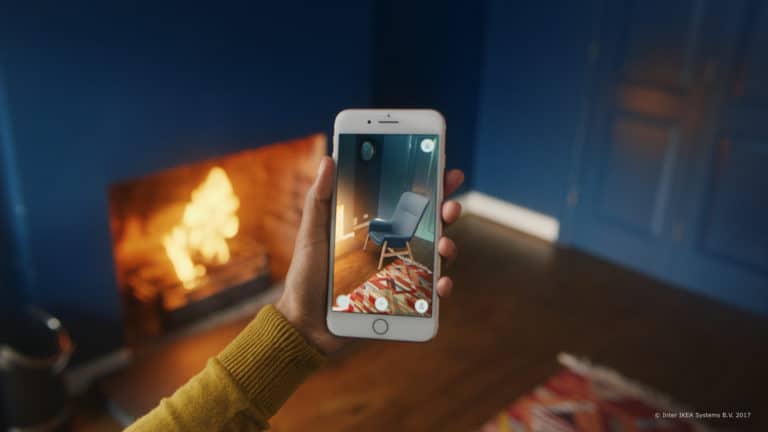
This post originally appeared at AR Insider’s partner Street Fight.
How Brands Are Using AR to Generate Buzz, Promote Loyalty
By Stephanie Miles, Street Fight, February 25, 2019
Word spread quickly when the prescription glasses retailer Warby Parker launched its new at-home try-on tool earlier this month. The tool, which relies on augmented reality in Warby Parker’s mobile app to allow shoppers to see how glasses look on their own faces, is not the company’s first foray into virtual try-ons. In fact, Warby Parker has been offering virtual try-ons through its website for years. However, by utilizing AR in a strategic way, Warby Parker is joining a select group of brands experimenting with AR to innovate in shopping experiences and enhance loyalty among dedicated customers.
IKEA has done it with furniture. Sephora has done it with makeup. Sherwin-Williams has done it with paint. But industry experts like Nancy Hua, chief technology officer and co-founder of Apptimize, see a growing push toward companies experimenting with using augmented reality technology to let shoppers experience products inside their own homes or on their own bodies.
The push into AR can be seen as a way for brand retailers to differentiate themselves from Amazon, bringing the in-store experience into the online world. It’s also a way for retailers to jumpstart word-of-mouth marketing, with the hope that using innovative technologies is new ways will have a viral effect and get people talking.
“AR is a way for brands to create more differentiated, interesting experiences that keep users engaged,” says Hua. “This is something Amazon can’t easily do because their product catalog is just too fragmented.”
Surveys point toward a growing demand for AR among shoppers, with retailers struggling to keep pace. According to BRP Consulting, 32% of retailers plan to use augmented reality and virtual reality within three years, and nearly half (48%) of consumers say they’re more likely to shop at a retailer that uses augmented reality.
But designing AR experiences that actually drive sales can be a challenge, and the most interesting or innovative AR experiences aren’t always the one that push retailers toward reaching their KPIs. Tracking is key for brands that are thinking about using AR for the first time.
“It’s pretty obvious to track things like items viewed, added to cart, and purchased after having seen the AR experience, but many brands fail to track how improvements to the mobile app impact all purchases,” Hua says. “We highly encourage brands to not only track how AR affects conversions within the mobile app, but also later purchases, [for example] sharing and adding to a wish list, and cross-platform purchases.”
The latter can be technologically tricky, which is why Hua’s team works closely with brands to help them measure the impact of mobile on web and in-store sales.
Hua says AR experiences are most likely to have the desired effect when they involve three things—search, browse, and buy. If it’s easier for shoppers to do each of those things whenever they want to, then the retailer can expect to achieve maximum results from the AR experience.
“The tricky part is usually balancing what you know the customer wants to do with what you want them to do. Sometimes customers are just looking to browse and feel inspired by beautiful images, but you need them to make a purchase in order to justify the Facebook ad spend,” she says. “Great digital experiences make it feel seamless to go from browsing or searching to buying.”
That seamless effect is part of what brands like Warby Parker are going for as they launch new AR initiatives. They’re also trying to stay away from anything that feels gimmicky, since that intangible feeling can have the opposite effect of promoting brand loyalty and positive reviews.
“At the end of the day, what do the metrics say? Are your customers engaged? Are they buying? Do they give you positive reviews?,” asks Hua. “If the metrics are positive, then the experience is probably not gimmicky. If customers are trying out the AR experience but not buying and leaving negative app reviews, then that’s a specific issue to address.”
See more about AR Advertising and AR Commerce in our recent reports.
For deeper XR data and intelligence, join ARtillery PRO and subscribe to the free AR Insider Weekly newsletter.
Disclosure: AR Insider has no financial stake in the companies mentioned in this post, nor received payment for its production. Disclosure and ethics policy can be seen here.
Header image credit: IKEA
